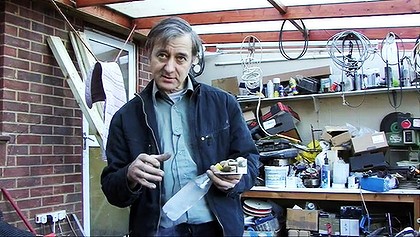Last week I went to a street fair in Boston. It was an interesting event to say the least, it was a celebration of local inventors and craftspeople. We made trans-music with a home built computerized digital orchestra, rode on electric motorbikes, played with robots and a large wooden catapult. Have a look at some of the photos here.
The robot collection was extraordinary, but one object really made me think. Someone had built there own 3D printer and was making objects as we watched.
3D printing has come up on this site before, but the fact that somebody could build one themselves at home had escaped me. And these types of printers have recently been in the news here in the USA for a very serious reason, somebody has claimed that they could produce a gun using only 3d printing.
Defense Distributed, a group of gun advocates, recently posted a YouTube video trying to raise money to make a printable gun. The concept is to use fast-improving 3D printer technology to create gun parts that could be assembled into a fully-workable firearm.
“As the printing press revolutionized literacy, 3D printing is in its moment,” Cody Wilson, 24, founder of Defense Distributed, said in the video clip.
Three-dimensional printers have been used industrially for years to produce plastic or metal objects, but as the prices for entry level machines have fallen as low as $500, the printers have become more prevalent among hobbyists and educational institutions.
Users can create or download a data file, then simply click “Print” and the machines will create the three-dimensional prototype.
Now this organization would like to distribute a data file for a workable gun, something that may well not even be illegal over here, the law remains fuzzy in the face of such technology.
Fortunately the printer company have taken their machine back from Mr. Wilson as it is illegal to manufacture guns without a license, but he has raised over $20 000 for his project so far so may well soon be able to buy another.
Another hobbyist has actually produced some parts for a gun, assembled it and fired it more than 200 times so this is certainly not science fiction. Have a look at this article in Gizmag.
Is this just a crazy idea? Or could it undermine any gun controls put in place and put weapons into everybody’s hands? The second is Mr. Wilson’s goal unfortunately.
This kind of unforeseen use for an otherwise interesting new technology reminds me of why I keep on battling for ethics and responsibility in innovation through my work.


